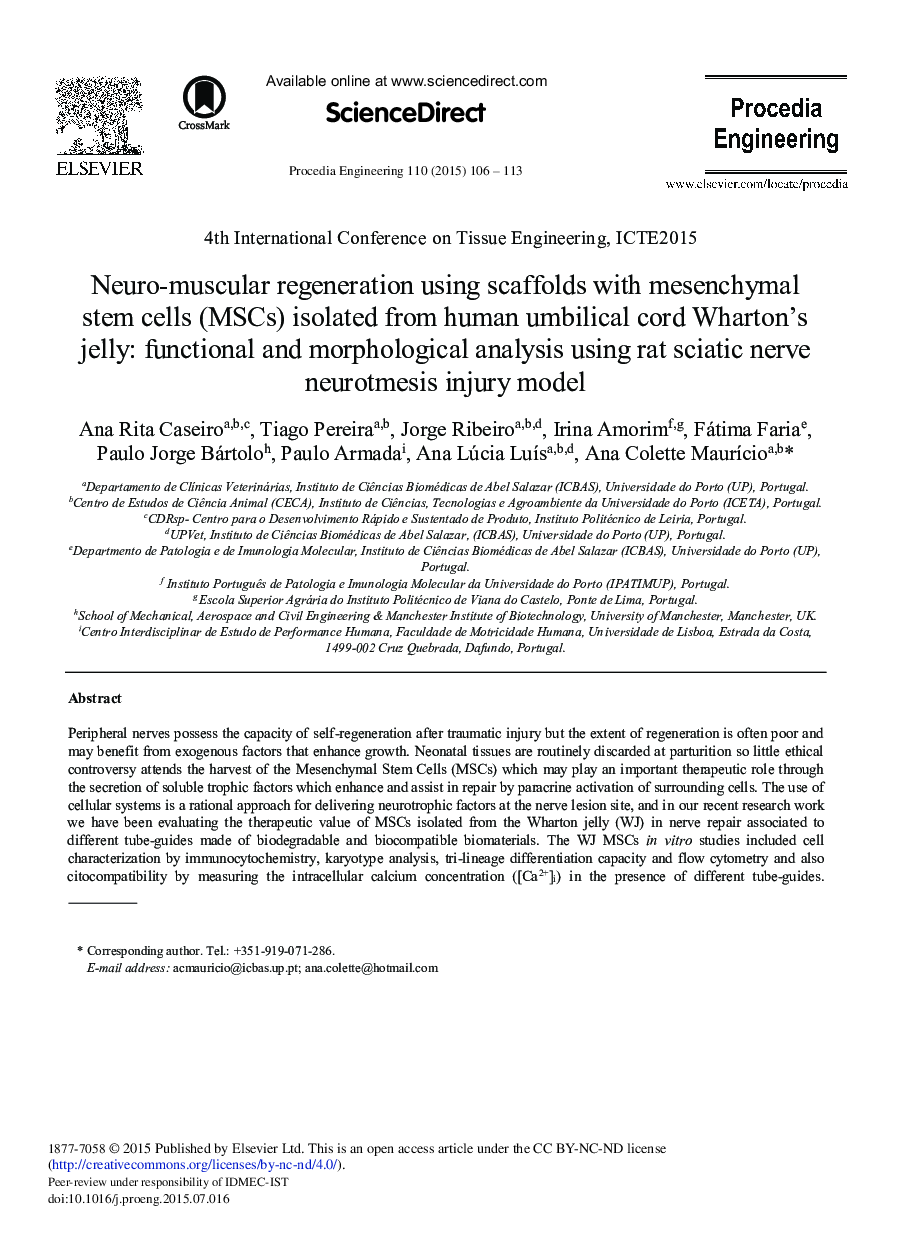| کد مقاله | کد نشریه | سال انتشار | مقاله انگلیسی | نسخه تمام متن |
|---|---|---|---|---|
| 856268 | 1470716 | 2015 | 8 صفحه PDF | دانلود رایگان |

Peripheral nerves possess the capacity of self-regeneration after traumatic injury but the extent of regeneration is often poor and may benefit from exogenous factors that enhance growth. Neonatal tissues are routinely discarded at parturition so little ethical controversy attends the harvest of the Mesenchymal Stem Cells (MSCs) which may play an important therapeutic role through the secretion of soluble trophic factors which enhance and assist in repair by paracrine activation of surrounding cells. The use of cellular systems is a rational approach for delivering neurotrophic factors at the nerve lesion site, and in our recent research work we have been evaluating the therapeutic value of MSCs isolated from the Wharton jelly (WJ) in nerve repair associated to different tube-guides made of biodegradable and biocompatible biomaterials. The WJ MSCs in vitro studies included cell characterization by immunocytochemistry, karyotype analysis, tri-lineage differentiation capacity and flow cytometry and also citocompatibility by measuring the intracellular calcium concentration ([Ca2+]i) in the presence of different tube-guides. Biomaterials like PVA, PVA loaded with MWCNTs (functionalized carbon nanotubes, PVA-CNTs), PVA loaded with polypyrrole (PVA-PPy), and PLC associated to MSCs were tested in terms of cytocompatibility and in vivo in the rat sciatic nerve neurotmesis injury model. The regenerated nerves and tibialis anterior (TA) muscles were processed for stereological studies after 20 weeks. The functional recovery was assessed serially for gait biomechanical analysis, by EPT, SFI and SSI, and by WRL. Histopathology of lung, liver, kidneys, regional lymph nodes ensured the biomaterials biocompatibility. The karyotype analysis of the MSCs excluded the presence of neoplastic signs, thus supporting the suitability of isolation and expansion protocols. The MSCs were positive for C-kit, Nanog and vimentin, and negative for CD31, following the International Society for Cellular Therapy (ISCT) definition. Results obtained from epifluorescence by measuring the [Ca2+]i of the MSCs cultured on tube-guides confirmed the ability to support their expansion, adhesion, and differentiation. Our results showed that the use of MSCs enhanced the recovery of sensory and motor function in neurotmesis injuries showing a thicker myelin sheath. MSCs isolated from WJ delivered through biomaterials should be regarded as a potentially valuable tool to improve clinical outcome especially after trauma to sensory nerves. In addition, these cells represent a non controversial source of primitive mesenchymal progenitor cells that can be harvested after birth, cryogenically stored, thawed, and expanded for therapeutic uses.
Journal: Procedia Engineering - Volume 110, 2015, Pages 106-113